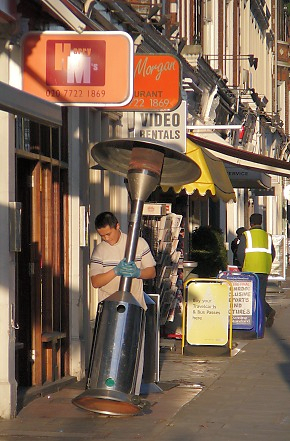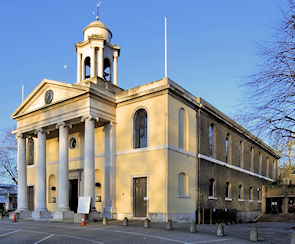St John’s Wood
St John’s Wood, Westminster
A plush 19th-century suburb with interwar augmentation, situated on the north-west side of Regent’s Park

The name was recorded in Latin form (Boscum Prioris Sancti Johannis) at the end of the 13th century, when the land came into the possession of the Order of the Hospital of St John of Jerusalem. The English name was first mentioned in 1524.
Henry Samuel Eyre, a London wine merchant, purchased the estate from the Earl of Chesterfield in 1732. St John’s Wood did not evolve in the same way as many other smart parts of London. Its low-lying situation, poorly served by roads, did not attract gentlemen’s seats and yet the Eyre family were keen to profit from its development, unlike more protective and resistant landowners elsewhere.
In 1794 the Eyres commissioned a plan that would have seen St John’s Wood laid out in the same style as the spa town of Bath but this was stymied by recession during the Napoleonic Wars.
To the south of the Eyre estate lay the farmland and former royal hunting ground of Marylebone Park, which had latterly been leased to the dukes of Portland. Most of their land was to become Regent’s Park but the northern tip was built up in the early 19th century as Portland Town, with housing for the working classes.
Westminster city council bought the plot of land that now forms the burial ground behind St John’s Wood church in 1808, and in 1814 St Marylebone vestry built the church itself to accommodate the neighbourhood’s growing population. Also in 1814, Thomas Lord’s cricket ground moved to its present site on St John’s Wood Road.

The Eyre family laid roads across their estate in the 1820s and agreed building contracts with a number of small firms, who did most of their work in the 1840s.
Construction standards were high and the new inhabitants were bankers, merchants and gentlemen of independent means. The houses had so many servants that mews were needed to accommodate the overflow. Later phases of building, especially towards the west, were less exclusive.
St John’s Wood was well-served by omnibuses from the late 1850s, and Marlborough Road station opened in 1868.
Portland Town was redeveloped from the 1890s, with a mix of institutional buildings and mansion blocks, together with shopping parades on the High Street. Elsewhere, blocks of private flats replaced many of the early Victorian houses during the 1930s. A new station was built in 1939 and opened as St John’s Wood, whereupon Marlborough Road station closed.
After the Second World War the municipal authorities rebuilt so extensively in the north and west that some parts of the former Eyre estate are no longer thought of as being in St John’s Wood. However, the surviving Victorian properties and the classiest of the flats and mansion blocks form a charming and prestigious enclave, which reaches its acme on Avenue Road.
In the 19th century St John’s Wood acquired various vaguely humorous nicknames, like Apostle’s Grove and the Grove of the Evangelist.
The Hungarian film producer Alexander Korda lived on Avenue Road from 1933 to 1939 and the composer Benjamin Britten lived on St John’s Wood High Street in the mid-1940s. More recent homeowners have included Sir Paul McCartney and the supermodel Kate Moss.
